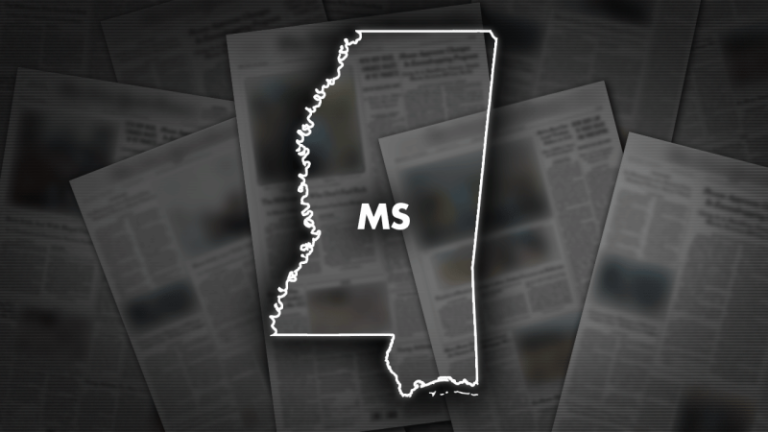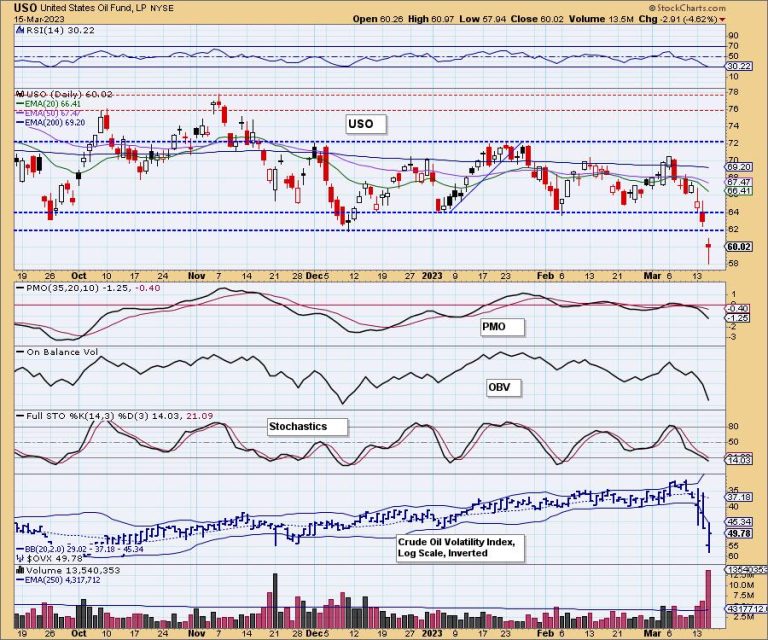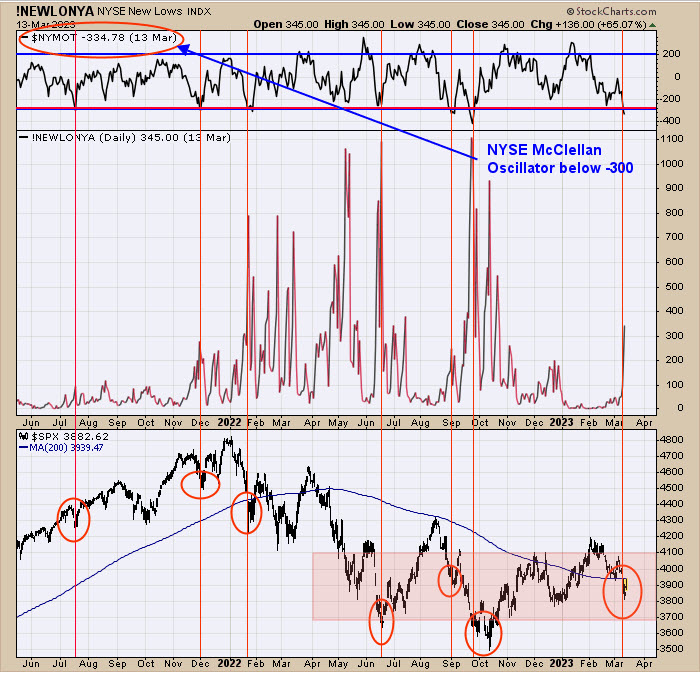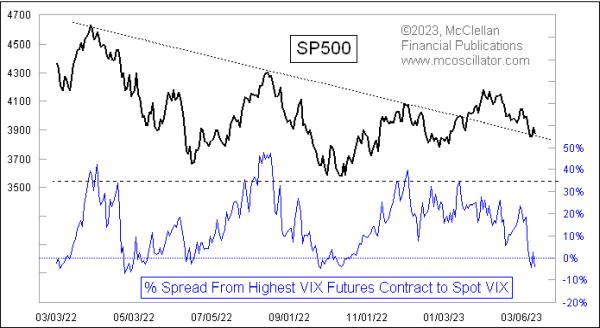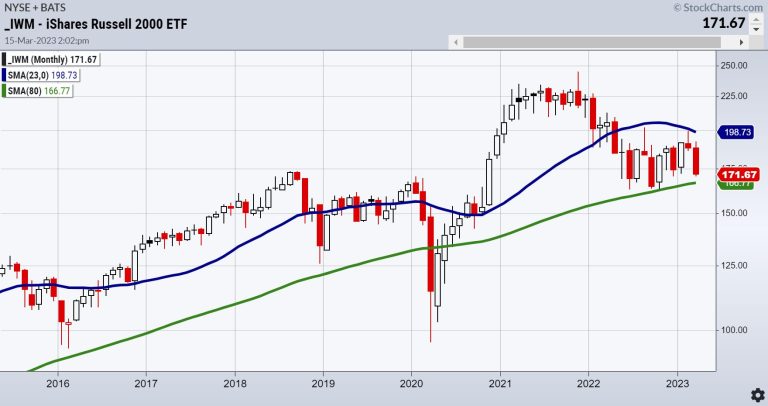In our book How to Grow Your Wealth in 2023, we featured our projections for the Economic Modern Family.
To begin with the Granddad of the Family — Russell 2000 (IWM) — in December 2022, we wrote this:
“The Russell 2000 IWM is the granddad of the Family. Hence, we take his performance seriously. At the start of 2022, IWM was already breaking down, well ahead of the S&P 500 (SPY). The monthly chart is the best one to use for a longer-term outlook for 2023.
“The green line or 80-month moving average represents about a typical business cycle.The 80-month moving average is the megatrend identifier. Should any of the key components fail the 80-month MA in 2023, the calls for ‘recession’ or more pain from stagflation will only get more painful for the market. As such, IWM only broke it once since September 2011 and that is during the pandemic. So, if we discount that time as unusual, we can say that it has been 12 years in a bullish megatrend. In October 2022, IWM touched it exactly.
“Now, coming into the new year, that October low is key. If IWM holds and gets back through the 23-month MA or blue line, then a bullish trend will continue. Should the 80-month breakdown, I would prepare for a tough time, with pandemic levels in focus.”
And here we are at the Ides of March.
IWM could not clear the 23-month moving average. And, with the recent news, IWM has fallen in price, but still considerably above the 80-month moving average. Neither indicative of growth nor recession, we’d call that a trading range.
We also call it stagflation.
With PPI and CPI coming in softer, on the heels of banks in crisis, the market turned its attention to the notion that the Fed will reduce rates this year. In fact, some predict the Fed will lower rates by 2% come December 2023. Sorry, but this resonates with the chaos theory and gold near $3000 per ounce.
Anyhoo, IWM held (although still weakest of the indices) and NASDAQ plus tech stocks took off. Which brings us to Sister Semiconductors.
From the Outlook:
“SMH has not traded below the 80-month MA since October 2010. In fact, the U.S. tech sector and the survival of chip technology has been the bright spot for 13 years! Even the pandemic did not bring this sector below the 23-month MA, as we are heavily reliant on tech for everything.
“Will that continue if the rest of the family fails? And, if SMH remains strong, can it ease the pain of recession?”
With March half over, we will see what our Sister Semiconductors are made of. Over the 23-month, and making money will be easier. However, without Gramps in tow, it will be a short-lived rally.
Lastly, our Complete Trader Bullish Reversal Scan had 2 tech stock picks. Intel (INTC) and Intuit (INTU) — two Tech stocks that should benefit if this chip rally sustains.
For more detailed trading information about our blended models, tools and trader education courses, contact Rob Quinn, our Chief Strategy Consultant, to learn more.
IT’S NOT TOO LATE! Click here if you’d like a complimentary copy of Mish’s 2023 Market Outlook E-Book in your inbox.
“I grew my money tree and so can you!” – Mish Schneider
Get your copy of Plant Your Money Tree: A Guide to Growing Your Wealth and a special bonus here.
Follow Mish on Twitter @marketminute for stock picks and more. Follow Mish on Instagram (mishschneider) for daily morning videos. To see updated media clips, click here.
Mish in the Media
Mish sees opportunity in Vietnam, is trading SPX as a range, and likes semiconductors, as she explains to Dale Pinkert on ForexAnalytix’s F.A.C.E. webinar.
Mish and Nicole discuss specific stock recommendations and Fed expectations on TD Ameritrade.
Mish joined the March 10 closing bell coverage on Yahoo! Finance, which you can see at this link!
Mish goes through the macro through key sectors and commodities in this appearance on CMC Markets.
Mish joins Mary Ellen McGonagle (of MEM Investment Research) and Erin Swenlin (of DecisionPoint.com) on the March 2023 edition of StockCharts TV’s The Pitch.
Mish talks women in finance for International Women’s Day on Business First AM.
Mish focuses on defense stocks in this appearance on CNBC Asia.
Mish points out a Biotech stock and a Transportation stock to watch if the market settles on Business First AM.
Mish joins Maggie Lake on Real Vision to talk commodities and setups!
Read about Mish’s article about the implications of elevated sugar prices in this article from Kitco!
While the indices remain range bound, Mish shows you several emerging trends on the Wednesday, March 1 edition of StockCharts TV’s Your Daily Five!
Mish joins Business First AM for Stock Picking Time in this video!
See Mish sit down with Amber Kanwar of BNN Bloomberg to discuss the current market conditions and some picks.
Click here to watch Mish and StockCharts.com’s David Keller join Jared Blikre as they discuss trading, advice to new investors, crypto, and AI on Yahoo Finance.
In her latest video for CMC Markets, MarketGauge’s Mish Schneider shares insights on the gold, the S&P 500 and natural gas and what traders can expect as the markets remain mixed.
Coming Up:
March 16th: The Final Bar with Dave Keller, StockCharts TV, and Twitter Spaces with Wolf Financial
March 17th: CheddarTV Closing Bell
March 20th: Madam Trader Podcast with Ashley Kyle Miller
March 22nd: The RoShowPod with Rosanna Prestia
And down the road
March 24th: Opening Bell with BNN Bloomberg
March 30th: Your Daily Five, StockCharts TV
March 31st: Festival of Learning Real Vision “Portfolio Doctor”
April 24-26: Mish at The Money Show in Las Vegas
May 2-5: StockCharts TV Market Outlook
ETF Summary
S&P 500 (SPY): 390 remains highly pivotal, especially on a closing basis; 380 support.Russell 2000 (IWM): Calendar range support level at 172.00, resistance 180.Dow (DIA): 310 support, 324 resistance.Nasdaq (QQQ): Wow-290 key, 300 next area to pierce.Regional Banks (KRE): 44 support, 50 resistance.Semiconductors (SMH): 240 pivotal support–strongest, yet still below the 2-yr biz cycle.Transportation (IYT): 218-219 so pivotal.Biotechnology (IBB): 126.50 moving average resistance.Retail (XRT): 60 big support and 64 big resistance.
Mish Schneider
MarketGauge.com
Director of Trading Research and Education


